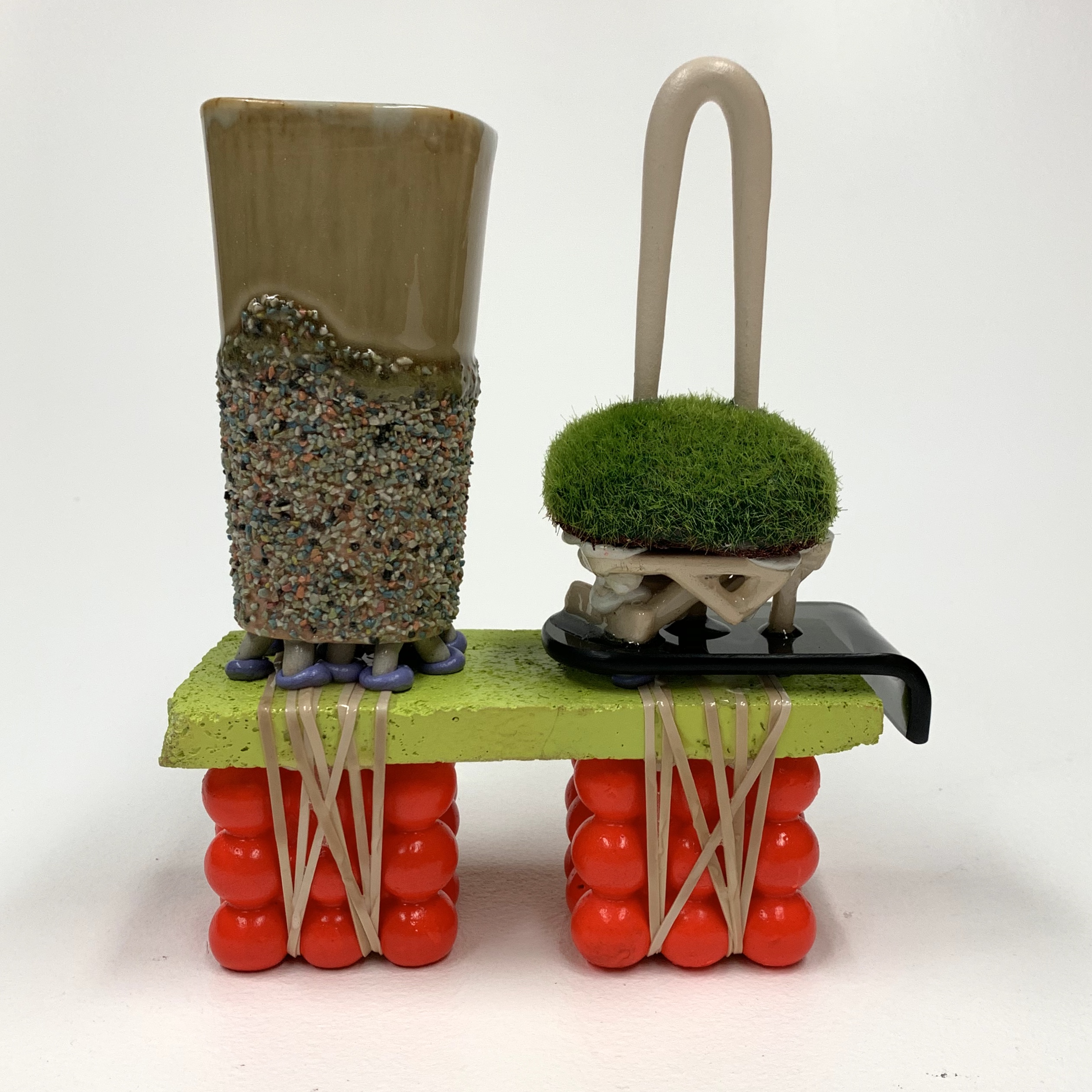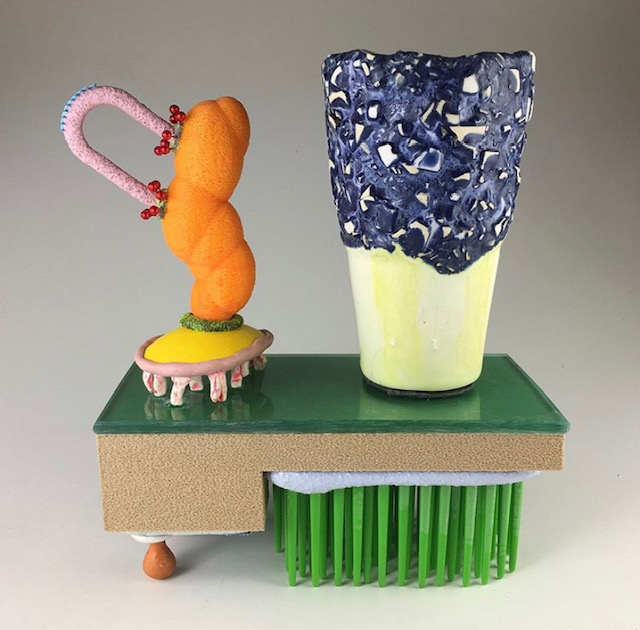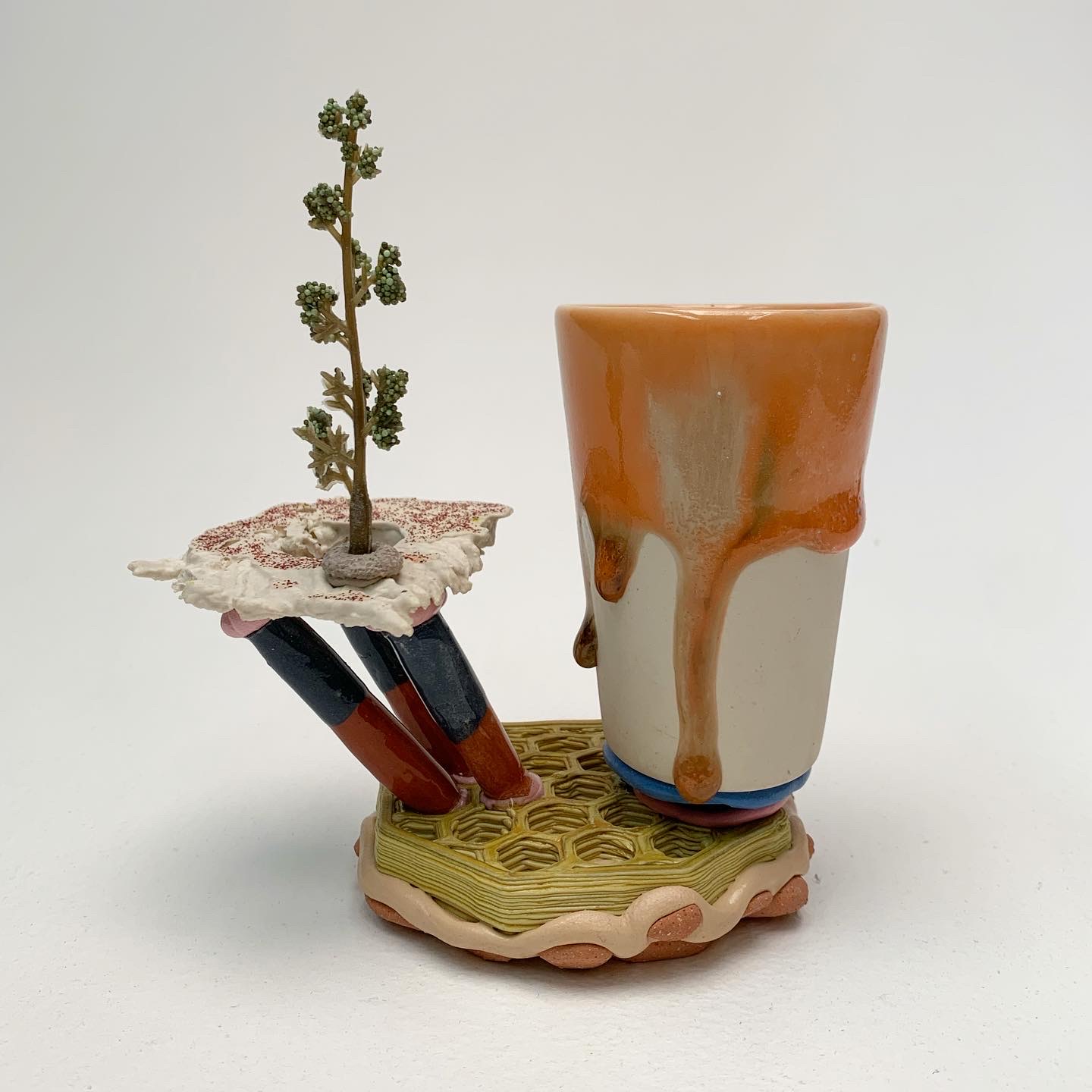A Cluttered History

The last two questions seem the most interesting (also the most challenging to target) and will serve as the focus of my writing as I endeavor to address the questions posed by one reader who inquired about my studio practice in their survey response, writing “I would be interested in an article about Matt Mitros’s recent work in comparison to studio pottery and how or if it fits in. Does it need to fit in? Does it make sense to make studio pottery anymore? Is the act of repeating the same thing over and over important? Is this watering down content, does Mitros’s work have content? Is a firing style content?”
The foundation of my reply is rooted in a much considered, maybe overly considered, conversation, but I have attempted to expand it in hopes of reaching beyond the usual rhetoric. Did artisans working with clay – particularly those who made vessels – 2,000 years ago consider themselves “studio potters,” or is this a new designation we use to identify certain makers and distinguish them from other artisans? People have subscribed to the process of taxonomy for thousands of years as a way of classifying members of a large group. We do this for efficiency. Computers do this type of organizing very well – they learned this from us.

When assigning individual makers to categories, there is a real chance that members of a group will form an allegiance to the group rather than the art. They may focus on their clan, on their team, on their membership, rather than on the act of opening their eyes and ears to what the other groups can offer. I believe there is power in being vulnerable and admitting that there may be answers to our own questions in the work and experiences of others.

"Do your activities as a maker need to be classified or labeled to contribute in a significant way?"
Since 2011 I have been creating highly abstracted compositions of shapes and materials that illustrate an uncomfortable union of the organic and the mechanized world. The work did not have a clear subject and was motivated by making awkward relationships between material and composition. In many ways they were three-dimensional still life compositions of an imaginary world and rarely extended beyond the playful exercises in my studio. The last few years, however, I have devoted my efforts in the studio to focusing on outrageous small-scale sculptures influenced by my love for coffee mugs. Mugs are about as ubiquitous as it can get in the world of ceramics and are usually one of the items pottery connoisseurs begin to collect when they seek out work to buy. The mug fascinates me because it is not only an iconic form of “pottery,” but also serves as a platform from which its implied function can be distorted and manipulated by the rearrangement of its architectural parts. Generally speaking, a mug has a few primary components: the negative space to hold liquids, a handle to help direct the user to grip the object in a particular way, and – in some cases – a saucer to help keep the heat and moisture off surfaces on which it is placed. Historically, the saucer also played a role by indicating a higher status of both object and user. These three components offer a kaleidoscope of options and arrangements when I begin to compose my heavily abstracted forms. In addition to the liberties I take when composing my forms, I also spend considerable time identifying ways I can synthesize the effects of glaze and clay by interpreting these surfaces and forms in other materials.

The accouterments associated
with my seven-year-old son’s existence – toys, three-dimensional puzzle parts, McDonald’s Happy Meal gifts, and other nuggets of unknown origins on his bedroom floor – serve as incredible resources for my work. Occasionally, I go to pet stores to find objects from which I make molds to cast forms in porcelain. Craft stores are also an exciting place to forage for items that can add color and texture to my pieces. In general, though, I prefer to reuse discarded items rather than store bought. It brings me meaning to inject life back into overlooked materials. In my studio, I have countless bins filled with everything you can imagine: Starbucks stir sticks, aluminum shavings, melted straws, broken medical grade Pyrex, feathers, toothpicks, human hair, rocks, colored rubber bands, and animal teeth to name a few. I enjoy redefining materials and items by using them in a radically different way than originally intended. This type of repurposing challenges me to stay true to my charter: to make materials transcend their predetermined purpose.
I don’t fit neatly into any easily definable group of makers, and this I celebrate. It has not always been the case, however, and confidence takes practice. When I first started making this work four years ago, I was unsure of what I was doing. I was somewhat hesitant to show the work and worried it would be misunderstood. Potters often ask me if my work is food safe. Sculptors regularly comment that my objects are sculptures and not mugs. These questions have galvanized my thoughts, and I no longer worry about belonging to a group of makers or being assigned to a particular style or way of working.

Until recently, I would find myself having severe existential moments at the annual National Council on Education for the Ceramic Arts (NCECA) conference when I would hear speakers lecturing on the different ways wood ash flutters around inside a kiln between 2100 and 2300 degrees Fahrenheit or when another speaker is talking about ways in which the Religious Referendum of eighteenth century England has informed their videos of interpretive dance with raw clay. I would leave the event convinced I will never again attend a future conference because I struggled to find fellow material synthesizers. It was at these moments of self-loathing that I was reminded why I need to begin booking my hotel room for the upcoming conference. I realized I want to learn more about the people who do things radically different from myself. The creative loneliness from not having a pack or a tribe or an easily recognizable group of similar makers is exactly what I want and need. It keeps me alert. It keeps me fresh. It keeps me hopeful that one day I may make something that matters. With each passing year, more and more artists are finding skills to interpret clay as a material and discovering exciting ways to define the new field of ceramics.
The history of ceramics is rich with examples of how a material – and the forms generated – can reflect the times from which the objects were made. The Mimbres pottery of the southwestern United States is a useful example of how a culture used the symbolic meaning of a vessel to contribute to the ritual of burial. Each day that passes, thousands of makers contribute in some way to the history of ceramics by shaping clay, by brushing colors on the surface of a form, and by throwing wood in a kiln. All these activities take skill. All these activities take courage.
Do your activities as a maker need to be classified or labeled to contribute in a significant way? No! There’s ample space for everyone to contribute, and I believe the history of ceramics will mark this period in time favorably as we begin to work towards dissolving the outdated labels, surrendering the artificial hierarchies, and listening to people with studio practices that are different from our own.


